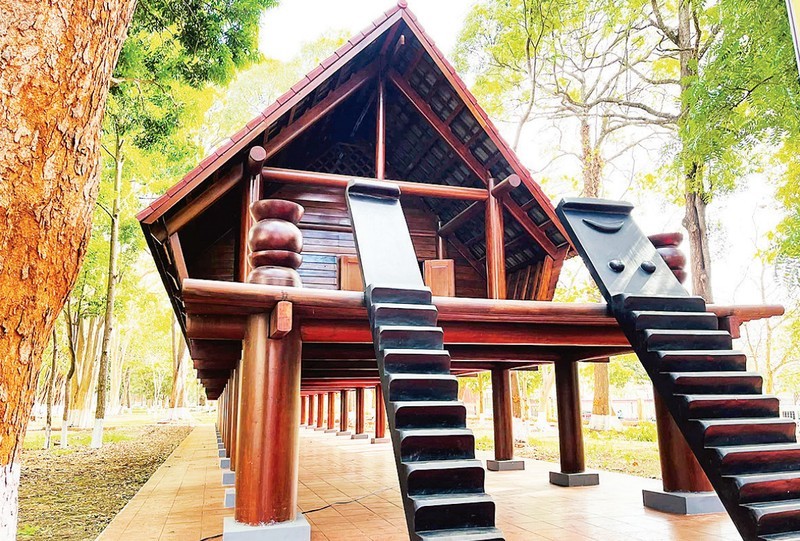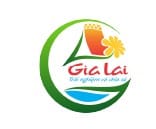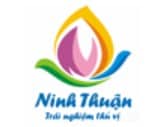According to cultural researchers in the Central Highlands, the traditional long house of the Ede people is a unique architectural space complex, showing features in daily life, beliefs-spirituality, with a creative and unique architectural style.
The house is often extended every time a female member of the extended family gets married. The married son will come to his wife’s house and have no authority. Usually, the long house of the Ede ethnic group has from seven to nine couples living together.
The layout of the traditional long house of the Ede is divided into two parts: the front half called “Gah” containing items such as the owner’s chair, the guest’s chair, the master kitchen, the Kpan bench, the gong and the place to receive guests. The back half is “OK” which is the accommodation of couples, with a shared kitchen.
In front of the door of the Ede people, there are two stairs, one for guests and one for family members, when going up and down, each stair has about 5-7 steps, made of precious wood, hewn by hand and the top of the ladder adjacent to the porch is carved with a crescent moon, under which there are carved two round breasts, symbolising the authority of the woman in the family. Under the roof is a space for performing gongs, a festival space, singing epic stories, brocade weaving, and community activities.
In the traditional long house, the sculptures, decorations and shapes, are modelled after the motif of matriarchy and traditional beliefs. The space of the house is arranged with Kpan chairs to play gongs and products showing the wealth of the owner, such as gongs, jars, buffalo horns, drums, and “can” wine.
Akŏ Dhŏng in Tan Loi ward, Buon Ma Thuot City, is a village with many traditional long houses of the Ede people and is also the richest village in the Central Highlands today.
The village elder Ama Jeny said that the materials used to make the traditional long house of the Ede people are mainly wood, bamboo, and thatched roofs.
The structure of the house is a wooden truss column that is resistant to harsh weather. The house is walled and lined with bamboo shingles, and a thatched roof, the rooftop is about 4m-5m from the floor, the heart of the house is about 4.5m-5.5m wide, and the house is located on the north-south axis.
With the current rapid urbanisation, the space of the village has many great changes, the shape of the current long house has also changed quite a lot in width, length, and stairs. The decoration in the house also no longer retains the traditional features as before.
Village elder Ama Jeny shared that the traditional long houses of the Ede people are gradually lost, and the preservation of traditional cultural values of the villages will be affected. Future generations will not be able to imagine how their ancestors lived in the past.
The good news is that in recent years, with the support of the State, in many villages in Dak Lak province, people have also become aware of the preservation of long houses, associated with other festivals and traditional cultures.
The current long house is both a place for family activities, as well as a place to visit and organise community tourism activities, thereby contributing to preserving and promoting unique traditional cultural values for the next generation.






























